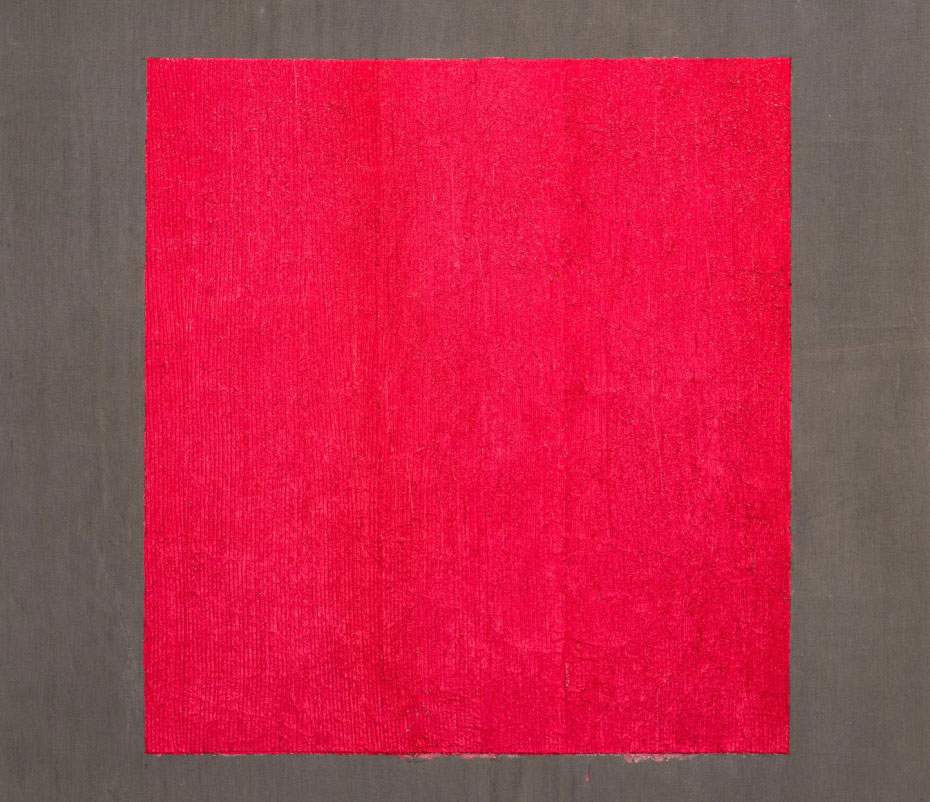The Villa Croce Museum of Contemporary Art in Genoa presents from May 4 to August 22, 2022 an extensive retrospective devoted to one of the greatest international interpreters ofabstractionism, the Czech naturalized Dutch artist Tomas Rajlich (Jankov, 1940). His works will be placed in dialogue with a number of key works in the museum’s collection spanning post-World War II abstractionism, perceptual and preconceptual research of the 1960s, Optical art, and the New Painting of the 1970s and 1980s.
Curated by Cesare Biasini Selvaggi, produced by the City of Genoa and realized in collaboration with the contemporary art gallery ABC-ARTE, the exhibition Make it new! Tomas Rajlich and Abstract Art in Italy aims to offer an unprecedented overview of Rajlich’s artistic journey and aniconic painting through more than eighty works.
After the great abstract season of the 1930s, in the 1960s and 1970s artists developed its language in the light of new trends (minimalism, conceptual art, the aesthetics of reduction). This phase represented not only a necessity, but also a period to whose legacy contemporary art returns, especially because of the surprising rediscovery of its effectiveness, qualities, conceptual brilliance and abstract expressiveness. It represents a source of insights and stimuli to draw on even today. The title of the exhibition Make it new! refers precisely to an original approach on the inexhaustible innovative charge of aniconic painting.
The exhibition itinerary of Tomas Rajlich’s works, testifying to more than half a century of research, starts from his beginnings in sculpture in the late 1960s and reaches his most recent works, with variations on the intensity, luminosity and texture of painting itself, through sensitive textures of matter-color. These will be compared and in dialogue with a selection of significant works by Italian masters of abstractionism, largely from the collection of the Villa Croce Museum of Contemporary Art: Getulio Alviani, Rodolfo Aricò, Agostino Bonalumi, Enzo Cacciola, Antonio Calderara, Nicola Carrino, Gianni Colombo, Pietro Consagra, Dadamaino, Piero Dorazio, Lucio Fontana, Marco Gastini, Giorgio Griffa, Riccardo Guarneri, Paolo Icaro, Osvaldo Licini, Piero Manzoni, Fausto Melotti, Bruno Munari, Martino Oberto, Claudio Olivieri, Arnaldo Pomodoro, Mauro Reggiani, Antonio Scaccabarozzi, Paolo Scheggi, Turi Simeti, Atanasio Soldati, Giuseppe Uncini, Nanni Valentini, Claudio Verna, and Gianfranco Zappettini.
Visitors will see a succession of paintings, drawings, and sculptures as unconventional as the Czech artist’s aesthetic was. The focus on Italian aniconic research was chosen by Rajlich himself, in relation to the exhibition spaces of Villa Croce and those artists who, since the 1950s, have worked more radically on abstraction and the minimalist use of color. Among the works on view are Achrome (1958) by Piero Manzoni, Cementarmato (1960) by Giuseppe Uncini, Uovo nero orizzontale (1961) by Lucio Fontana, Bianco (1967) by Agostino Bonalumi, and Tema II and 7 variazioni (1969-70) by Fausto Melotti.
Tomas Rajlich studied at the School of Decorative Arts and the Academy of Fine Arts in Prague. In 1967 he founded the group Klub Konkretistu, which was in the wake of the international neo-avant-gardes embodied by Azimut in Italy, ZERO in Germany, and Nul in the Netherlands. In 1968 his work experienced its first moment of international visibility through his participation in the Sculpture Tchécoslovaque exhibition at the Rodin Museum in Paris. Exiled from Czechoslovakia in 1969 following the Soviet invasion, he moved to Holland, where he became a lecturer at the Vrije Academie in The Hague. Rajlich’s interest in constructing monochrome works on geometrically regular grids was immediately welcomed in the climate of Dutch conceptualism.
Rajlich’s canvases show a growing interest in the “fundamental” in painting, unlike his American minimalist contemporaries. His early works are characterized by an industrial look and modular quality, while his mature works show a more complex reasoning about the essential idea that painting is an entity reflecting on itself. His more recent monochromes explore the combination of the impersonal, the gestural, and the creative force of light. They are variations on the intensity, brightness and facture of painting, while remaining clear factual painting.
In 1993 his first retrospective exhibition was organized at Palazzo Martinengo in Brescia. In 1994 he was awarded the prestigious Ouborg Award in the Netherlands for his artistic contribution, and on this occasion the Gemeentemuseum in The Hague organized Rajlich’s second retrospective. Ten years later, in 2005, on his sixty-fifth birthday, the museum hosted a retrospective of his works on paper.
In the Czech Republic, in 1998, Dum umeni´ mesta Brna organized an anthological exhibition, while in 2008 the National Gallery in Prague opened a retrospective with 27 large canvases, followed again by solo shows at the Gemeentemuseum in The Hague in 2016, in 2017 at the Museum Kampa in Prague, and in 2018 at the Museum Boijmans-Van Beuningen in Rotterdam.
From 1999 to 2002 Rajlich was artist-in-residence at the Centre Georges Pompidou in Paris, which keeps his works in its collection, which are also present at the Centraal Museum in Utrecht, the Musée d’ Art et d’Industrie in Saint Etienne, the Musée Cantini in Marseille, the Museum Boijmans-Van Beuningen in Rotterdam, the Museum of Modern Art in New York, the National Gallery in Prague, the Peter Stuyvesant Foundation in Amsterdam, the National Gallery of Canada in Ottawa, the S.M.A.K. in Ghent, the Stedelijk Museum in Amsterdam, the Stedelijk Museum in Schiedam, the Stedelijk Museum De Lakhal in Leiden, and the Stedelijk Museum Het Prinsenhof in Delft.
For info: www.museidigenova.it
Image: Tomas Rajlich, Radha (2018; acrylic on canvas, 135 x 135 cm). Courtesy ABC-ARTE. Ph.Credit Ilaria Caprifoglio
 |
| A major retrospective in Genoa on Tomas Rajlich and abstractionism in Italy |
Warning: the translation into English of the original Italian article was created using automatic tools. We undertake to review all articles, but we do not guarantee the total absence of inaccuracies in the translation due to the program. You can find the original by clicking on the ITA button. If you find any mistake,please contact us.